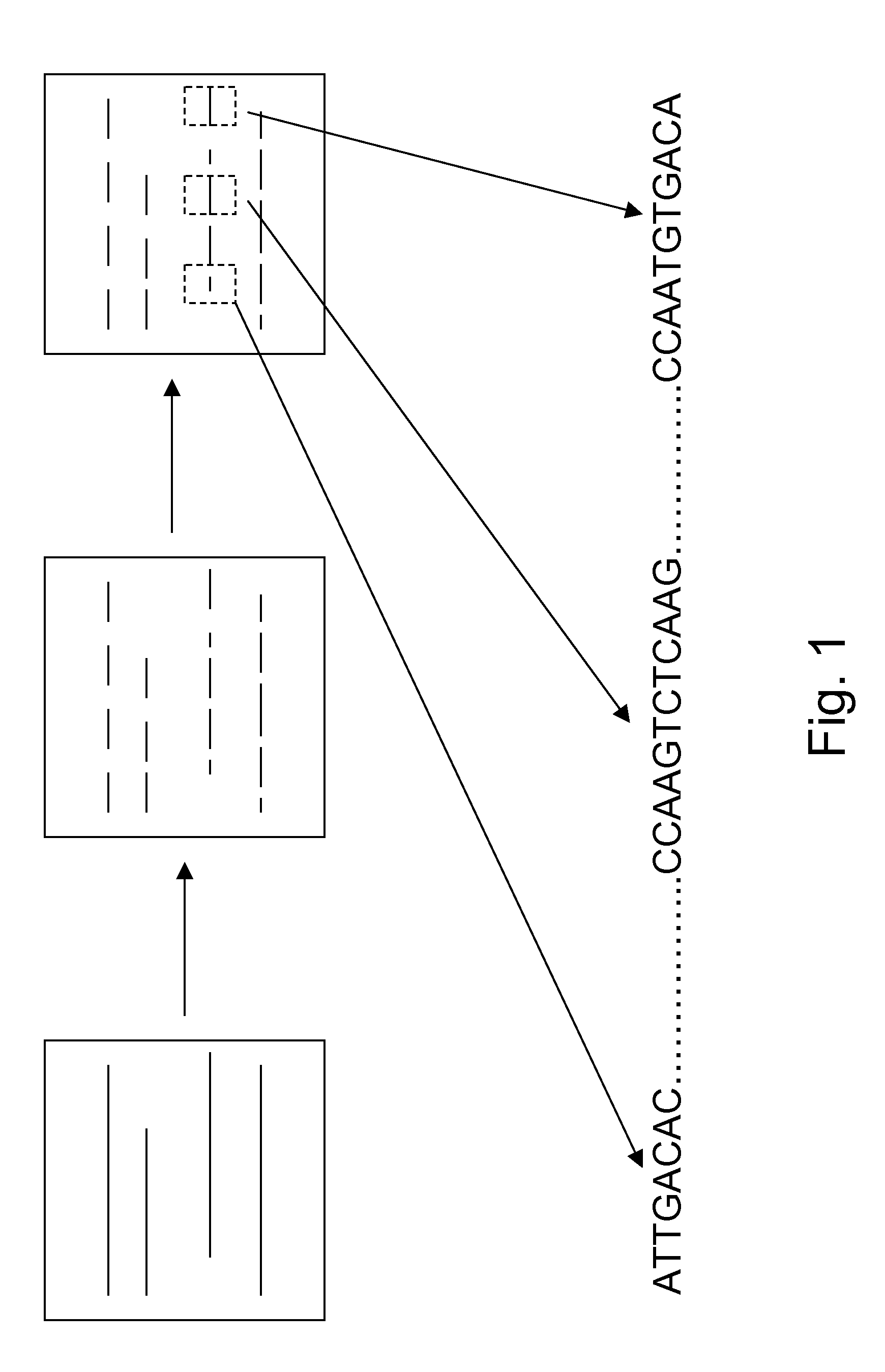Virtual reads for readlength enhancement
a virtual read and readlength technology, applied in the field of nucleic acid sequencing, can solve the problems of limiting factors in current sequencing technologies, process duplicates, and inability to fully sequence the genome of individuals, so as to reduce the amount of oversequencing required and reduce the ambiguity of sequence assembly
- Summary
- Abstract
- Description
- Claims
- Application Information
AI Technical Summary
Benefits of technology
Problems solved by technology
Method used
Image
Examples
Embodiment Construction
[0030]Nucleic acids are analyzed in array formats in a variety of contexts, including, e.g., in nucleic acid sequencing applications. In the present invention, nucleic acid template (typically DNA) molecules are distributed into processing regions of an array, where they are fragmented (e.g., by cleavage). Relative positions of the resulting fragments is at least partly maintained, e.g., by binding, fixing or otherwise retaining the fragments in place where they are generated, such that the geographical (spatial) position of the fragments on the array is an indicator for the relative position of subsequences of the fragments in the long nucleic acid templates. Relative positional relationships between the analyte fragments is at least partly preserved (or logically transformed, e.g., by an array transfer process that transfers the analytes to a selected destination region, e.g., in an array copying process) such that positional relationships of the analyte fragments substantially co...
PUM
| Property | Measurement | Unit |
|---|---|---|
| length | aaaaa | aaaaa |
| Nucleic acid sequencing | aaaaa | aaaaa |
| nucleic acid sequencing | aaaaa | aaaaa |
Abstract
Description
Claims
Application Information
 Login to View More
Login to View More - R&D
- Intellectual Property
- Life Sciences
- Materials
- Tech Scout
- Unparalleled Data Quality
- Higher Quality Content
- 60% Fewer Hallucinations
Browse by: Latest US Patents, China's latest patents, Technical Efficacy Thesaurus, Application Domain, Technology Topic, Popular Technical Reports.
© 2025 PatSnap. All rights reserved.Legal|Privacy policy|Modern Slavery Act Transparency Statement|Sitemap|About US| Contact US: help@patsnap.com



